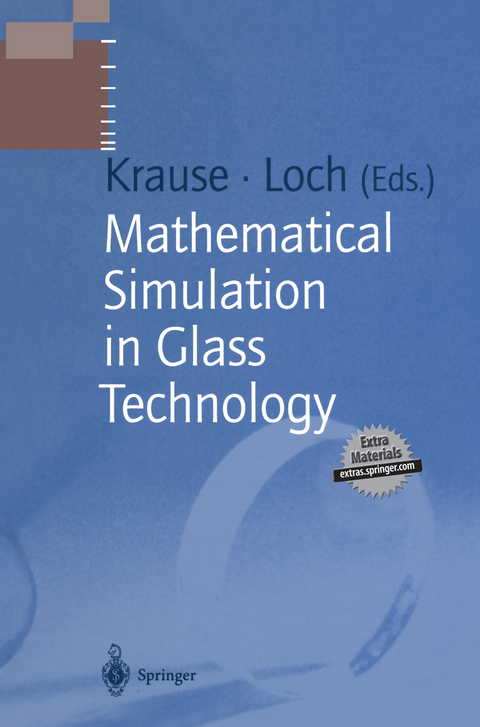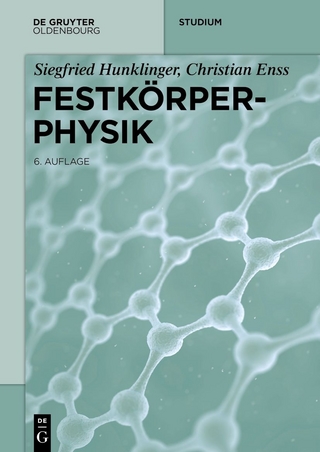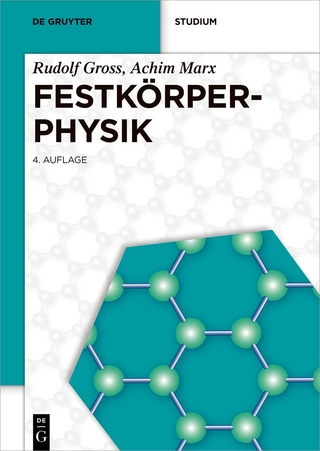
Mathematical Simulation in Glass Technology
Springer Berlin (Verlag)
978-3-642-62782-8 (ISBN)
Overview.- 1.1 Introduction.- 1.2 Systematics and Boundary Conditions of This Book.- 1.3 Some Important 3D Continuum Equations.- References.- 2. Melting and Fining.- 2.1 Modeling of the Melting Process in Industrial Glass Furnaces.- 2.2 Mathematical Modeling of Batch Melting in Glass Tanks.- 2.3 High-Frequency Melting of Glass in Crucibles.- 2.4 Model-Based Glass Melter Control.- References.- 3. Homogenizing and Conditioning.- 3.1 The Intensity of Mixing Processes.- 3.2 Instabilities and Stabilization of Glass Pipe Flows.- 3.3 Shape Optimization of Flanges.- References.- 4. Shaping at Low Viscosities.- 4.1 Heat Transfer Between Glass and Mold During Hot Forming.- 4.2 Remote Spectral Temperature Profile Sensing.- 4.3 Heat Transfer During Casting Experiments.- 4.4 Thin-Layer Flows of Glass.- 4.5 Pressing of Drinking-Glass Stems.- 4.6 The Use of Remeshing Methods in Pressing Simulations.- 4.7 Chill Ripples in Pressing and Casting Processes.- References.- 5. Reshaping at High Viscosities.- 5.1 Temperature-Dependent Elasticity in Reshaping Simulations.- 5.2 Sagging and Pressing of Glass Sheets.- 5.3 Calibration of Glass Tubes.- 6. Thermal Treatment.- 6.1 Verification of Relaxation Models.- 6.2 Stresses and Crack Growth in Continuously Formed Slabs.- 6.3 Thermal Tempering of Drinking Glasses.- 7. Post-Processing by Laser Cutting.- 7.1 Rough Estimation of Process Parameters.- 7.2 Numerical Analysis of Cutting Processes.- 7.3 Practical Realization.- 7.4 Appendix: Fundamentals of Fracture Mechanics.- 8. Glass Products Under Mechanical and Thermal Loads.- 8.1 Strength Optimization of Airbag Igniters.- 8.2 Stiffness and Weight Optimization of a Reticle Stage for Optical Lithography.- References.- 9. Simulation and Test of the Spinning Process Applied to Platinum Metals.- 9.1 Necessity to Shape Materials.- 9.2 Qualitative Description of the Spinning Process.- 9.3 Essential Assumptions for the Modeling of the Spinning Process.- 9.4 General Relations for the Model of the Spinning Process.- 9.5 Approximations.- 9.6 A Practical Example for the First and Second Approximations.- 9.7 Experimental Observations and Discussion.- References.- List of Contributors.- Sources of Figures and Tables.
From the reviews:
"This volume reports on a large variety of mathematical simulations, covering all production steps of special glass manufacturing ... . The mathematical approach often helps in understanding the overall and sometimes hidden features of processes and thus is a highly efficient tool for optimization efforts. Complementing and partly replacing experimental investigations, mathematical simulation makes possible considerable savings in time and money. Several of the results reported are unique and published for the first time." (Verre Bulletin d'informations, Vol. 9 (1), 2003)
| Erscheint lt. Verlag | 20.11.2013 |
|---|---|
| Reihe/Serie | Schott Series on Glass and Glass Ceramics |
| Zusatzinfo | XI, 477 p. |
| Verlagsort | Berlin |
| Sprache | englisch |
| Maße | 155 x 235 mm |
| Gewicht | 695 g |
| Themenwelt | Naturwissenschaften ► Physik / Astronomie ► Festkörperphysik |
| Naturwissenschaften ► Physik / Astronomie ► Thermodynamik | |
| Technik ► Maschinenbau | |
| Schlagworte | Calculus • Calibration • Glas • Glass • Glass Forming • Glass Melting • Glass under Mechanical or Thermal Load • linear optimization • Mathematical Modeling • Mathematical Simulation • Mechanics • Model • Modeling • Numerical analysis • Optimization • Simulation • verification |
| ISBN-10 | 3-642-62782-X / 364262782X |
| ISBN-13 | 978-3-642-62782-8 / 9783642627828 |
| Zustand | Neuware |
| Informationen gemäß Produktsicherheitsverordnung (GPSR) | |
| Haben Sie eine Frage zum Produkt? |
aus dem Bereich


